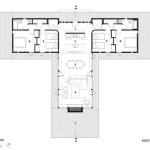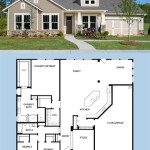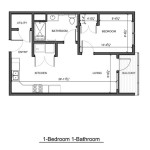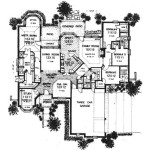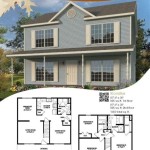What Scale Are Floor Plans Typically Drawn In?
Floor plans are a crucial tool for architects, builders, and homebuyers alike. They provide a detailed overview of a building's layout, dimensions, and features. Understanding the scale of a floor plan is essential for interpreting the information it contains accurately.
### Importance of ScaleThe scale of a floor plan indicates the relationship between the actual size of the building and the size of the plan. This allows the viewer to understand the dimensions of the building and its components, such as rooms, walls, and fixtures.
### Typical Scales UsedFloor plans are typically drawn to scale using the following ratios:
- 1:20 This scale is ideal for small buildings, such as apartments or houses. It provides a detailed view of the layout and allows for accurate measurements.
- 1:50 This scale is used for larger buildings, such as commercial or industrial facilities. It provides a more general overview of the layout, but still allows for measurements to be taken.
- 1:100 This scale is used for very large buildings, such as hospitals or warehouses. It provides a broader view of the layout, but measurements may be less accurate.
The scale of a floor plan is usually indicated in the title block. The title block is a small area on the plan that contains information such as the project name, date, and drawing number. The scale will be expressed as a ratio, such as "1:20" or "1/20".
### Interpreting the ScaleOnce you have determined the scale of a floor plan, you can interpret the information it contains. For example, if a room on a floor plan measures 10 units by 15 units at a scale of 1:20, the actual size of the room will be 200 square feet (10 x 15 x 20 = 200).
### Limitations of ScaleIt is important to note that floor plans are not exact representations of reality. They may not accurately reflect the exact dimensions or angles of the building. Additionally, the scale of a floor plan may be distorted if the plan is enlarged or reduced.
### ConclusionUnderstanding the scale of a floor plan is essential for interpreting the information it contains accurately. The scale indicates the relationship between the actual size of the building and the size of the plan. The most common scales used are 1:20, 1:50, and 1:100. By knowing the scale, you can accurately determine the dimensions and layout of the building.
How To Draw ¼ 1 Scale For A Floor Plan Quora
How To Draw ¼ 1 Scale For A Floor Plan Quora

How To Draw A Floor Plan Scale Measuring Sketching

How To Read A Basic Floor Plan Lofty Building Group

Plans Draf21a1
How To Draw ¼ 1 Scale For A Floor Plan Quora

Understanding Scales And Scale Drawings A Guide

Floor Plan Wikipedia

How To Read A Floor Plan With Dimensions Houseplans Blog Com

How To Draw A Floor Plan Scale Measuring Sketching
Related Posts




